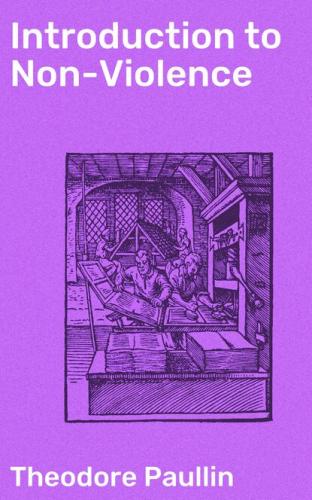FINANCIAL SUPPORT
The Pacifist Research Bureau is financed entirely by the contributions of organizations and individuals who are interested in seeing this type of research carried on. We trust that you may desire to have a part in this positive pacifist endeavor to aid in the formulation of plans for the world order of the future. Please make contributions payable to The Pacifist Research Bureau, 1201 Chestnut Street, Philadelphia 7, Pennsylvania. Contributions are deductible for income tax purposes.
DIRECTOR'S FOREWORD
"When I use a word," Humpty Dumpty said, in a rather scornful tone, "it means just what I choose it to mean—neither more nor less."
"The question is," said Alice, "whether you can make words mean different things."
In the writings of pacifists and non-pacifists concerning theories of and experiences with non-violence, there is a clear lack of uniformity in the use of words.
The present booklet, introducing the Bureau's new series on Non-Violent Action in Tension Areas, distinguished by green covers, critically examines pacifist terminology. But it does more, for it analyzes various types of non-violence, evaluates examples of non-violence referred to in previous literature, and points to new sources of case material.
Dr. Theodore Paullin, Assistant Director of the Bureau, is the author of this study. The manuscript has been submitted to and reviewed by Professor Charles A. Ellwood and Professor Hornell Hart, both of the Department of Sociology, Duke University; and by Richard B. Gregg, author of several works on the philosophy and practice of non-violence. Their criticisms and suggestions have proved most helpful, but for any errors of interpretation the author is responsible.
The Pacifist Research Bureau frankly bases its work upon the philosophy of pacifism: that man should exercise such respect for human personality that he will employ only love and sacrificial good will in opposing evil and that the purpose of all human endeavor should be the creation of a world brotherhood in which cooperative effort contributes to the good of all. A list of pamphlets published or in preparation appears on the back cover.
HARROP A. FREEMAN,
Executive Director
Any organization ordering 500 or more copies of any pamphlet published by the Pacifist Research Bureau may have its imprint appear on the title page along with that of the Bureau. The prepublication price for such orders is $75.00 for each 500 copies.
PREFACE
The purpose of the present study is to analyze the various positions found within the pacifist movement itself in regard to the use of non-violent techniques of bringing about social change in group relationships. In its attempt to differentiate between them, it makes no pretense of determining which of the several pacifist positions is ethically most valid. Hence it is concerned with the application of non-violent principles in practice and their effectiveness in achieving group purposes, rather than with the philosophical and religious foundations of such principles. It is hoped that the study may help individuals to clarify their thinking within this field, but the author has no brief for one method as against the others. Each person must determine his own principles of action on the basis of his conception of the nature of the universe and his own scale of ethical values.
The examples chosen to illustrate the various positions have been taken largely from historical situations in this country and in Europe, because our traditional education has made us more familiar with the history of these areas than with that of other parts of the world. It also seemed that the possibilities of employing non-violent methods of social change would be more apparent if it was evident that they had been used in the West, and were not only applicable in Oriental societies. It is unfortunate that this deliberate choice has eliminated such valuable illustrative material as the work of Kagawa in Japan. The exception to this general rule in the case of "Satyagraha" has been made because of the wide-spread discussion of this movement in all parts of the world in our day.
I want to acknowledge with great appreciation the suggestions I have obtained from the preliminary work done for the Pacifist Research Bureau in this field by Russell Curtis and Haridas T. Muzumdar.
THEODORE PAULLIN
July 1, 1944
INTRODUCTION TO NON-VIOLENCE
I. INTRODUCTION: ON TERMS
"In the storm we found each other." "In the storm we clung together." These words are found in the opening paragraphs of "Hey! Yellowbacks!" The War Diary of a Conscientious Objector. Ernest L Meyer uses them to describe the psychological process by which a handful of men—a few professors and a lone student—at the University of Wisconsin grew into unity because they opposed the First World War, when everyone around them was being carried away in the enthusiasm which marked the first days of American participation. If there had been no storm, they might not have discovered their affinity, but as it was, despite the disparity of their interests and backgrounds, they found themselves in agreement on the most fundamental of their values, when all the rest chose to go another way. By standing together they all gained strength for the ordeals through which each must go, and they were filled with the spirit of others before them and far removed from them, who had understood life in the same way.[1]
The incident may be taken as symbolic of the experience through which pacifists have gone in this Second World War, too. Men and women of many creeds, of diverse economic backgrounds, of greatly divergent philosophies, with
